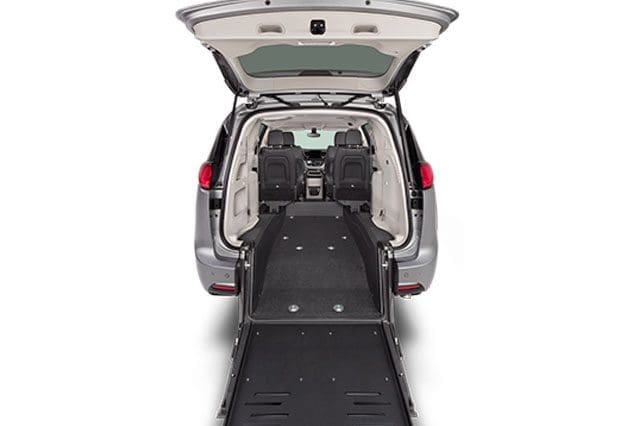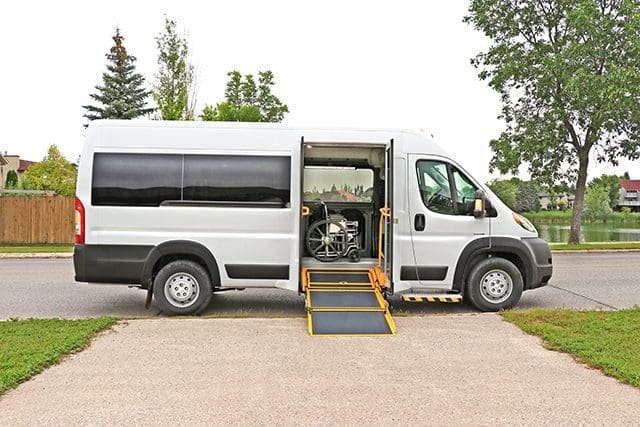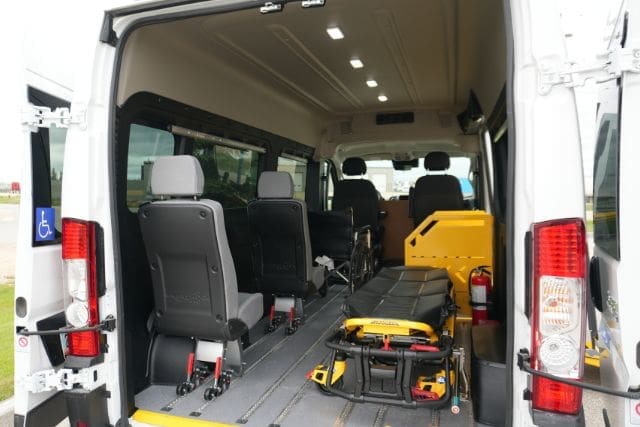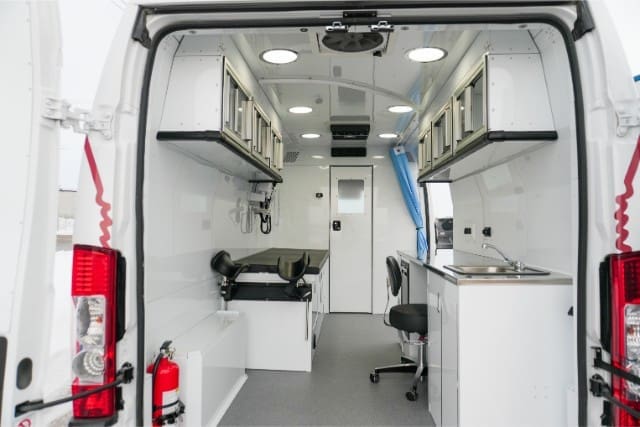Buying a wheelchair accessible vehicle can be a long and confusing process, especially if you don’t know what your vehicle needs to have in order to be made wheelchair accessible.
If you’re looking to buy a vehicle from a dealership and then get it converted somewhere else, you need to know which vehicles can actually be converted. What if you choose the wrong vehicle, and you find out later that conversion companies can’t convert your vehicle?
Well, you’ll be wasting both your time and money, and you won’t be providing the level of comfort you should to an already vulnerable population under your care.
To avoid purchasing the wrong vehicle, you need to know two things:
- What makes a vehicle wheelchair accessible
- The factors that can stop you from converting a van
That’s why, in this article, you’ll get answers to both of these questions and more, with specific measurements you can save to refer to as you look at different vehicles.
At MoveMobility, our technician experts have selected vehicles that we know (from over 20 years of experience) we can make wheelchair accessible.
But before you learn which vehicles you can convert, you need to know what makes a vehicle wheelchair accessible.
What makes a vehicle wheelchair accessible?
There are two things every wheelchair accessible vehicle needs to achieve:
- A wheelchair user can easily and safely enter and exit the vehicle (using a ramp or a lift)
- You can secure a wheelchair into the vehicle and safely travel using securements
Conversions typically include lowering or installing the floor, vehicle interior lining and finishing, ramp or lift installations, and wheelchair securements.
Up to 40 alterations can be required to convert a vehicle to become wheelchair accessible, depending on the type of ramp or lift you choose and whether the vehicle is side-entry or rear-entry.
Now that you know what makes a wheelchair van accessible–the ability to have a rear or side entry ramp or lift), you may be wondering which specific models you can convert.
Which vehicles can be made wheelchair accessible?
At MoveMobility, we have four different kinds of vans that we can make wheelchair accessible:
- Ford Transit
- Ram Promaster
- Chrysler/Dodge Grand Caravan
MoveMobility technician experts chose these vehicles because they are all:
- Able to have a ramp or a lift
- Large enough space for at least one wheelchair
- Efficient and safe to convert, meaning that the vehicle is able to have extensive work/alterations done to it. The frame can handle the conversion, and the vehicle still runs just as well and doesn’t break down quicker
Given these requirements, there are obviously some vehicles that we just can’t make wheelchair accessible.
Which vehicles can’t be made wheelchair accessible?
There are some vehicles we just can’t convert, including:
- Sedans
- Hatchbacks
- Large motor coaches
- Some SUVs (back door doesn’t open all the way up)
You may be able to guess why we can’t convert some of these vehicles (namely, sports cars), but there are some factors you probably don’t know–such as the term “headroom”.
What qualities does a vehicle need to have to be wheelchair accessible?
There are three key qualities a vehicle must have to be converted:
1. The vehicle must leave enough room between the wheelchair user’s head and the roof (roof height)
All wheelchair accessible vehicles must have space between the wheelchair user’s head and the roof because anything else would be a safety hazard.
Let’s think about this for a second. Imagine you’re sitting in a van, and the top of your head is pressed against the roof. With every bump and jostle, your head hits the roof of the van. It’s uncomfortable–maybe it even hurts.
This is why there should be 4-6 inches of space between the wheelchair user’s head and the van’s roof.
Of course, this number will vary greatly depending on the person is height. One thing to remember is that in a full size wheelchair van, there are usually no concerns about headroom. If you’re transporting many passengers at once and you’re concerned about the different heights, don’t be. Headroom is usually only an issue in minivans.
One way you can ensure there is enough headroom is by measuring how tall the wheelchair user is when they are sitting in their wheelchair, and then measuring the height of the inside of the van from the floor to the roof. Subtract the first measurement from the second, and see what number you get.
Roof height – wheelchair user height (when sitting in the wheelchair) = headroom
If the number is in the negatives, you know you won’t be able to convert that van.
You can use this downloadable form to help you make these measurements:
2. The doors must open up all the way
To make a van wheelchair accessible, the doors must be able to open up all the way.
Think about this in terms of a ramp or a lift. If you’re traveling up a ramp and into the back of a van, you need enough space to be able to actually get inside the van. If the trunk door doesn’t open up all of the way (leaving the entire space open), a wheelchair user won’t be able to get inside the van.
For example, here is a photo of a Chrysler Grand Caravan with a rear entry ramp:

As you can see from the photo, the trunk door goes all the way up, leaving a significant amount of room for the wheelchair user to enter the van.
The same goes for a side entry van. The doors must be able to open completely to the side to allow enough room for the wheelchair user to enter the van.
Here is another example to help you visualize this:

As you can see from the photo above, the door slides completely to the side, allowing a wheelchair user to easily enter the van.
3. There must be enough space in the back of the van
You also need to have enough space in the back of the van for a wheelchair to be safely secured and comfortable during the ride.
We recommend that the wheelchair user has about 1 foot of space in front and behind them, and a half a foot of space on either side of them.
This ensures the wheelchair user won’t be “squished”, for lack of a better term, into the van. It is very important that the van you choose is not only safe for a wheelchair user, but also comfortable.
Take this image as an example:

As you can see, there is a significant amount of room on either side of the wheelchair user to ensure a safe and comfortable journey.
Now that we’ve covered what qualities a vehicle needs to have to be made wheelchair accessible, you’re probably wondering what qualities immediately make a vehicle impossible to convert.
What factors make it difficult/impossible for a vehicle to be wheelchair accessible?
There are three key qualities in a vehicle that should immediately mark it with a big red X in your mind:
1. The roof height is too low, not allowing 4-6 inches of headroom for the wheelchair user
2. The rear and side doors don’t open up all the way.
3. The back of the van doesn’t have enough space, with dimensions of less than 1 foot in front of and behind the wheelchair user, and less than half a foot of space on either side of the wheelchair user
Tip: Save this article and use it as a point of reference as you look into a variety of vehicles you want to convert.
Your next steps to knowing which vehicles can be made wheelchair accessible

You came to this article to learn which vans could be made wheelchair accessible.
Now, you know which models MoveMobility can make wheelchair accessible, and what qualities you can look for in a vehicle to see if it can be made wheelchair accessible.
Learn more about which wheelchair vans we offer and talk to a MoveMobility expert today.
Or, check out these related articles:







